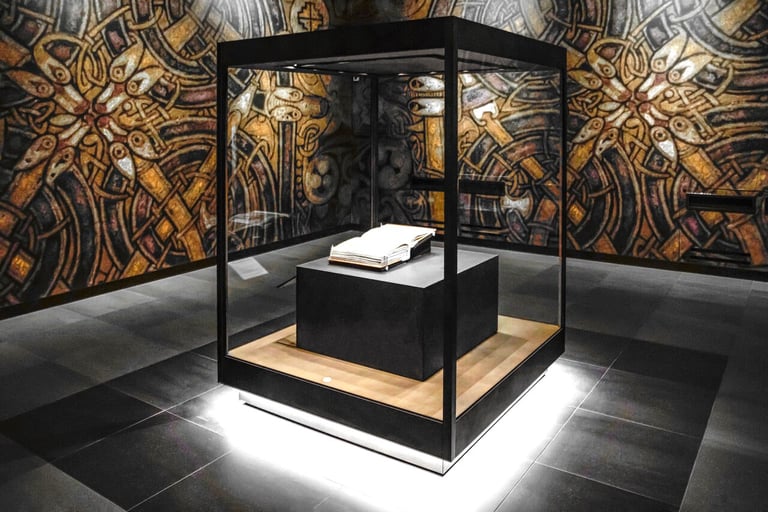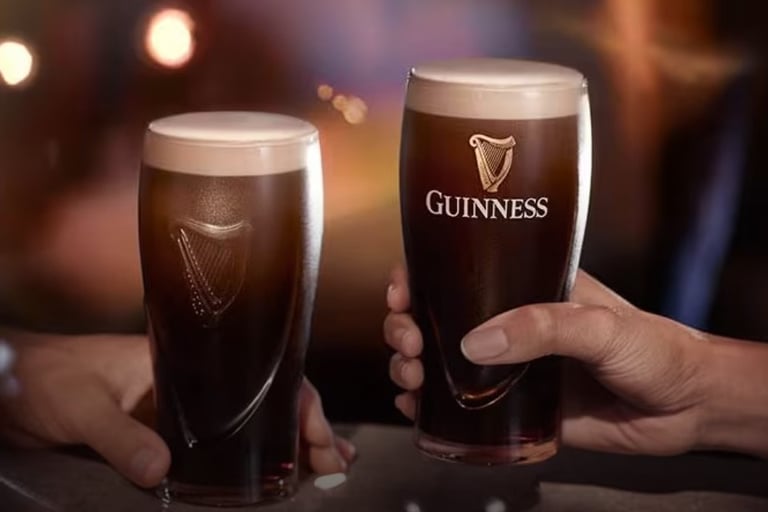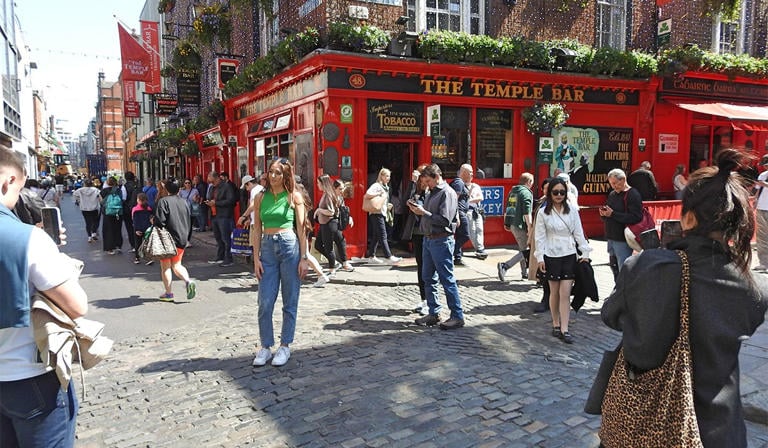Discover Dublin: A Captivating Journey Through Ireland's Capital
PlanPackGo
7/16/20258 min read


A Glimpse into Dublin's Rich History
Dublin, the capital city of Ireland, boasts a rich and multifaceted history that spans over a millennium. Its origins can be traced back to the early Viking settlement around the 9th century, which established the city as a pivotal trading post. The name 'Dublin' is derived from the Irish word ‘Dubhlinn,’ meaning 'black pool,' referring to a dark tidal pool where the River Poddle met the River Liffey. This strategic location fostered economic growth and cultural exchange, laying the groundwork for the city's future.
The medieval period marked significant developments in Dublin’s history, characterized by the establishment of Dublin Castle in the early 13th century. Originally built as a defensive fortification, Dublin Castle transformed into the seat of English rule in Ireland. It became a center where important decisions were made, reflecting the city's role as a key political hub over the centuries. The castle's architectural evolution showcases the transition from medieval to modern influences, symbolizing the resilience and adaptability of the city.
Dublin's history took a pivotal turn during the 20th century, particularly with the Easter Rising of 1916, a crucial armed insurrection against British rule. This event became a defining moment for Irish nationalism and played an essential role in the subsequent struggle for independence. The Rising is commemorated in contemporary Dublin, with monuments and museums that honor the bravery of those who fought for the nation’s freedom. The historical events leading to the establishment of the Irish Free State in 1922 further shaped Dublin, reinforcing its identity as a symbol of national pride.
Through centuries of conflict, change, and growth, Dublin has continuously evolved, weaving a rich tapestry of history that influences its culture today. Understanding this historical context is vital for appreciating the vibrant cityscape that Dublin presents to its visitors and residents alike, providing a captivating journey through its past and present.
Stunning Scenery and Landscapes
Dublin, the vibrant capital of Ireland, is renowned not only for its rich history and culture but also for its stunning scenery and diverse landscapes. Dominating the city is the iconic River Liffey, which meanders through the heart of Dublin, offering picturesque views from numerous bridges. The river’s banks are lined with cafes and walkways where locals and tourists alike can enjoy the serene ambiance while taking in the sights of the bustling city.
In addition to urban landscapes, Dublin is also graced with natural beauty in its coastal areas, most notably at Howth and Dun Laoghaire. These districts are celebrated for their rugged cliffs and breathtaking seascapes that mesmerize visitors. Howth, a charming fishing village, presents an excellent opportunity for scenic walks along the cliff paths, where the Atlantic Ocean meets the sky. Meanwhile, Dun Laoghaire boasts a stunning harbor, perfect for leisurely strolls, sailing, or enjoying a meal at one of the waterfront restaurants.
Furthermore, the city is home to several urban parks that offer a tranquil escape from the hustle and bustle. Phoenix Park, one of the largest enclosed city parks in Europe, is a haven for both wildlife and outdoor enthusiasts. With its expansive grounds, visitors can partake in activities such as cycling, jogging, or simply unwinding amidst the greenery. St. Stephen’s Green, a beautifully landscaped public park located in the city center, provides another picturesque spot for relaxation and leisure. Its vibrant flowerbeds, serene ponds, and walking paths make it an ideal venue for picnicking or enjoying a peaceful afternoon.
Through its stunning scenery and varied landscapes, Dublin invites all to explore and appreciate the unique blend of nature and urban life this remarkable city has to offer.
Unforgettable Activities and Experiences
Dublin offers an impressive array of activities and experiences that cater to diverse interests, making it a welcoming destination for every type of traveler. One of the most iconic experiences in the city is a visit to the Guinness Storehouse. Here, enthusiasts can explore the history of Ireland’s most famous brew, delve into the brewing process, and enjoy a pint at the Gravity Bar, which boasts stunning views of the Dublin skyline.
For those interested in cultural experiences, the city’s vibrant pub scene is not to be missed. Visitors can enjoy traditional Irish music sessions at local pubs, where the lively atmosphere is alive with the sounds of fiddles, bodhráns, and engaging storytelling. These sessions offer not only an authentic taste of Irish hospitality but also a chance to mingle with both locals and fellow travelers.
Furthermore, Dublin’s rich literary heritage is celebrated through various literary tours that pay homage to its status as a UNESCO City of Literature. Tourists can walk in the footsteps of James Joyce, W.B. Yeats, and Samuel Beckett, visiting iconic locations that inspired these literary giants. Such tours provide a fascinating insight into the profound impact of literature on Dublin’s culture and identity.
Festivals also play a significant role in the Dublin experience. The city hosts a myriad of events throughout the year, from the lively St. Patrick's Festival to the Dublin Fringe Festival, showcasing a blend of art, music, and performance. Whether one seeks adventure, history, or culture, Dublin remains a bustling hub of activities that promise unforgettable memories for all who visit.
Where to Stay: Best Hotels and Accommodation
Dublin offers a plethora of options for accommodations, catering to a variety of preferences and budgets. Whether you are seeking luxury hotels, boutique guesthouses, or budget-friendly hostels, the city's rich tapestry of lodging choices ensures that every traveler can find the ideal place to rest after a day of exploration.
For those looking for luxury, the Merrion Hotel stands out with its elegant Georgian architecture and impeccable service. Located in the heart of Dublin, it provides guests with a seamless blend of opulence and comfort, featuring lavish rooms and an expansive art collection. The Fitzwilliam Hotel, another five-star option, boasts stunning views of St. Stephen’s Green and presents modern amenities combined with traditional Irish hospitality.
Visitors who prefer boutique accommodations will find Dublin's vibrant guesthouses appealing. The Dean Dublin is an excellent example, with its chic, contemporary design and inviting atmosphere. This hotel frequently hosts cultural events and has popular dining options, making it a hub of local life. Places like the Alex offer stylish rooms along with a convenient city center location, ideal for guests wanting to experience Dublin's lively nightlife.
Travelers on a budget will also be pleased with several economical options available in Dublin. The Generator Hostel is known for its modern layout and social environment, making it a great choice for younger tourists or solo travelers. Additionally, various budget hotels such as The Abbey Hotel and Hotel 7 provide comfort and convenience without compromising quality.
Family-friendly accommodations are vital for those traveling with children. The Clayton Hotel Burlington Road offers spacious family rooms and easy access to Dublin’s attractions, ensuring a stress-free stay for parents and little ones alike. Overall, Dublin’s diverse range of hotels and accommodations guarantees that visitors will find suitable lodgings that enhance their enjoyable experience in this fascinating capital city.
Cultural Attractions You Can't Miss
Dublin, the vibrant capital of Ireland, is not only a hub of contemporary culture but also a treasure trove of historical significance. For those eager to explore the city's cultural landscape, several key attractions stand out as must-visit sites. One such highlight is the Book of Kells, housed at Trinity College. This illuminated manuscript, dating back to the 9th century, features intricate artwork and is considered one of Ireland’s greatest national treasures. Visitors can view this extraordinary book in the Old Library, which itself is a masterpiece of architecture, drawing art and history enthusiasts alike.
Another essential stop is the National Museum of Ireland, which comprises multiple branches dedicated to showcasing the nation’s rich heritage. The Archaeology branch is particularly notable, featuring artifacts that span thousands of years, including the famous bog bodies, medieval gold, and exquisite craftsmanship. Each exhibit narrates a story of Ireland’s past, making it an enlightening experience for all who enter.
For a glimpse into Dublin’s tumultuous history, a visit to Kilmainham Gaol is imperative. This former prison played a significant role during Ireland's struggle for independence. Guided tours provide insights into the lives of prominent political figures who were imprisoned here, weaving a narrative of resilience and sacrifice. The atmosphere within the gaol serves as a poignant reminder of the country's complex history and ongoing journey towards freedom.
With these diverse attractions, Dublin offers a multifaceted cultural experience. Each site not only reflects the artistic flair of the city but also serves as a portal to understanding Ireland's storied past. The captivating blend of culture, history, and art makes Dublin an essential destination for anyone looking to delve deep into the heart of Irish identity.
A Taste of Dublin: Fine Dining and Traditional Food
Dublin's culinary scene is a vibrant tapestry that weaves together centuries of tradition with modern innovation. The city offers an expansive range of dining experiences, from exquisite fine dining restaurants to cozy pubs serving authentic Irish fare. At the heart of Dublin's food culture is the tradition of gathering over hearty meals, exemplified by classic dishes that define Irish cuisine.
One must-try dish is the iconic Irish stew, a comforting blend of tender lamb or beef, potatoes, carrots, and onions simmered to perfection. This dish represents the soul of Ireland, highlighting the importance of using locally sourced ingredients. Another notable offering is boxty, a traditional potato pancake that can be enjoyed in various forms, showcasing the versatility of the beloved spud. Both dishes can be found in numerous eateries around the city, allowing visitors to appreciate rich flavors steeped in history.
Dublin also invites diners to savor its famed beverages, particularly the world-renowned Guinness. A visit to the Guinness Storehouse not only allows guests to learn about the brewing process, but they can also enjoy a pint of this iconic stout while soaking in breathtaking views of the Dublin skyline. For those seeking a more refined experience, notable fine dining establishments such as Chapter One and The Woollen Mills offer modern interpretations of traditional flavors, presenting menus that highlight seasonal produce and innovative cooking techniques.
Food markets like George's Street Arcade and Temple Bar Food Market further emphasize Dublin’s passionate food culture, featuring artisanal vendors and local producers. Visitors to these markets can indulge in an array of local delicacies, from fresh-baked soda bread to delectable Irish chocolates. The culinary journey through Dublin is not merely about sustenance; it encapsulates a sense of heritage and community, ensuring that every meal tells a story.
Lights, Camera, Action: Dublin in Film
Dublin has long stood as a vibrant backdrop for numerous films and television series. The city's unique blend of rich history, stunning architecture, and lively culture makes it an attractive location for filmmakers seeking to capture the essence of Ireland. From major blockbusters to indie films, Dublin’s cinematic presence has been felt globally, illustrating its significance in the world of cinema.
One of the most iconic examples is the acclaimed film "Once," which beautifully showcased the streets of Dublin and highlighted the local music scene. The film’s poignant love story is intricately intertwined with locations such as the renowned Grafton Street and the picturesque Ha'penny Bridge. These settings not only serve as a visual feast but also reflect the city's soul, providing viewers with a glimpse of its artistic pulse.
Another notable example is "P.S. I Love You," starring Hilary Swank and Gerard Butler, which features various Dublin hotspots. The film captures the city's charm through its breathtaking landscapes, bustling streets, and cozy pubs. The inclusion of local landmarks serves to deepen the emotional connection the audience has with both the story and the city itself.
Moreover, popular television series such as "Normal People," adapted from Sally Rooney's best-selling novel, have chosen Dublin’s historic neighborhoods to convey intimate moments and relationships. The authenticity of Dublin’s settings enriches the characters' experiences, linking the narrative to the cultural tapestry of the city.
For visitors and film enthusiasts alike, exploring these cinematic locations in Dublin presents an engaging way to experience the city. It allows one to appreciate not only the beauty of the surroundings but also the cultural stories interwoven within its streets. Whether it's through a famous film scene or a beloved television series, Dublin continues to enchant audiences and inspire storytellers alike.






Plan
Your guide to unforgettable travel experiences awaits.
Pack
Go
info@planpackgo.blog
© 2025. All rights reserved.
